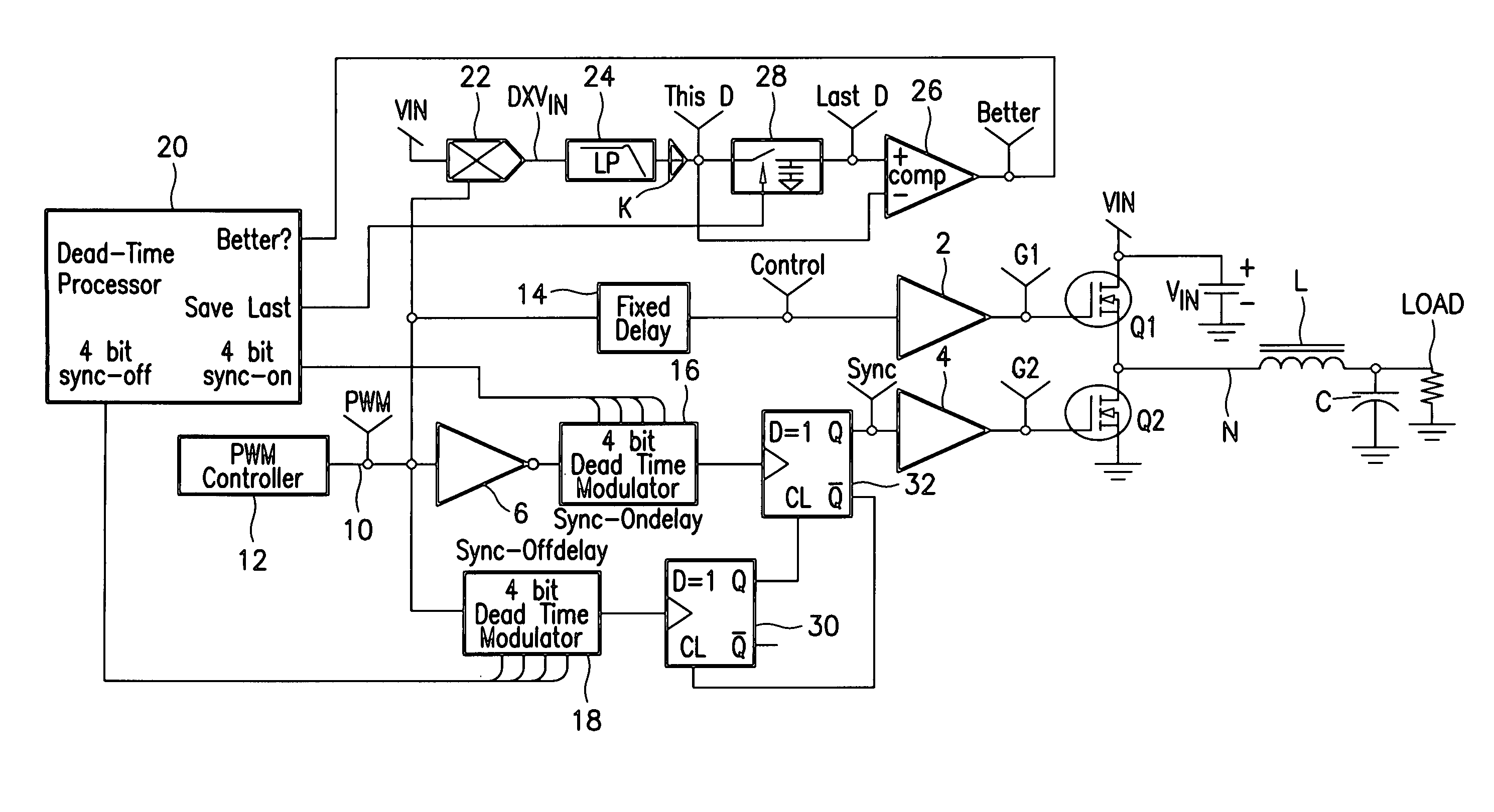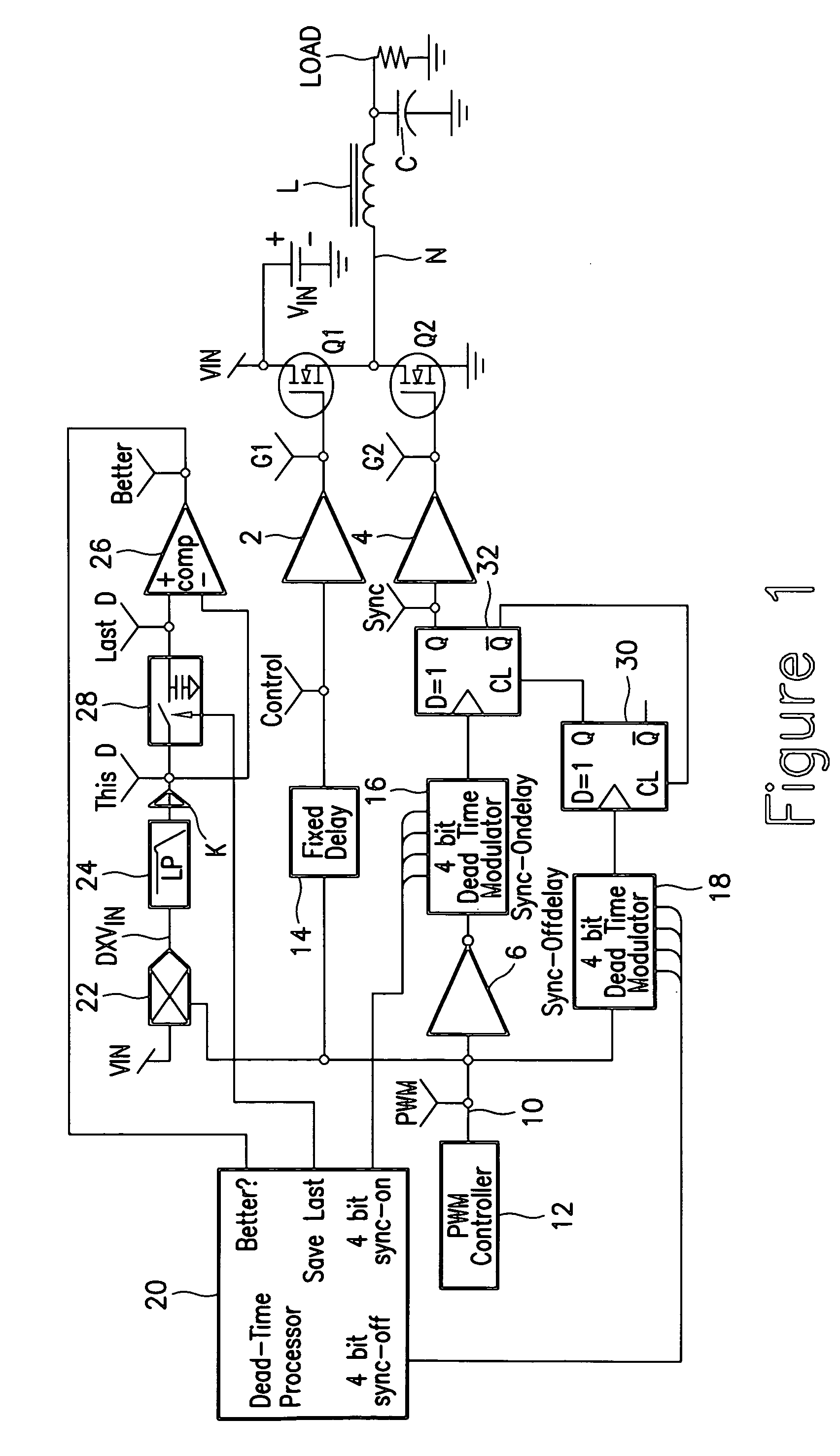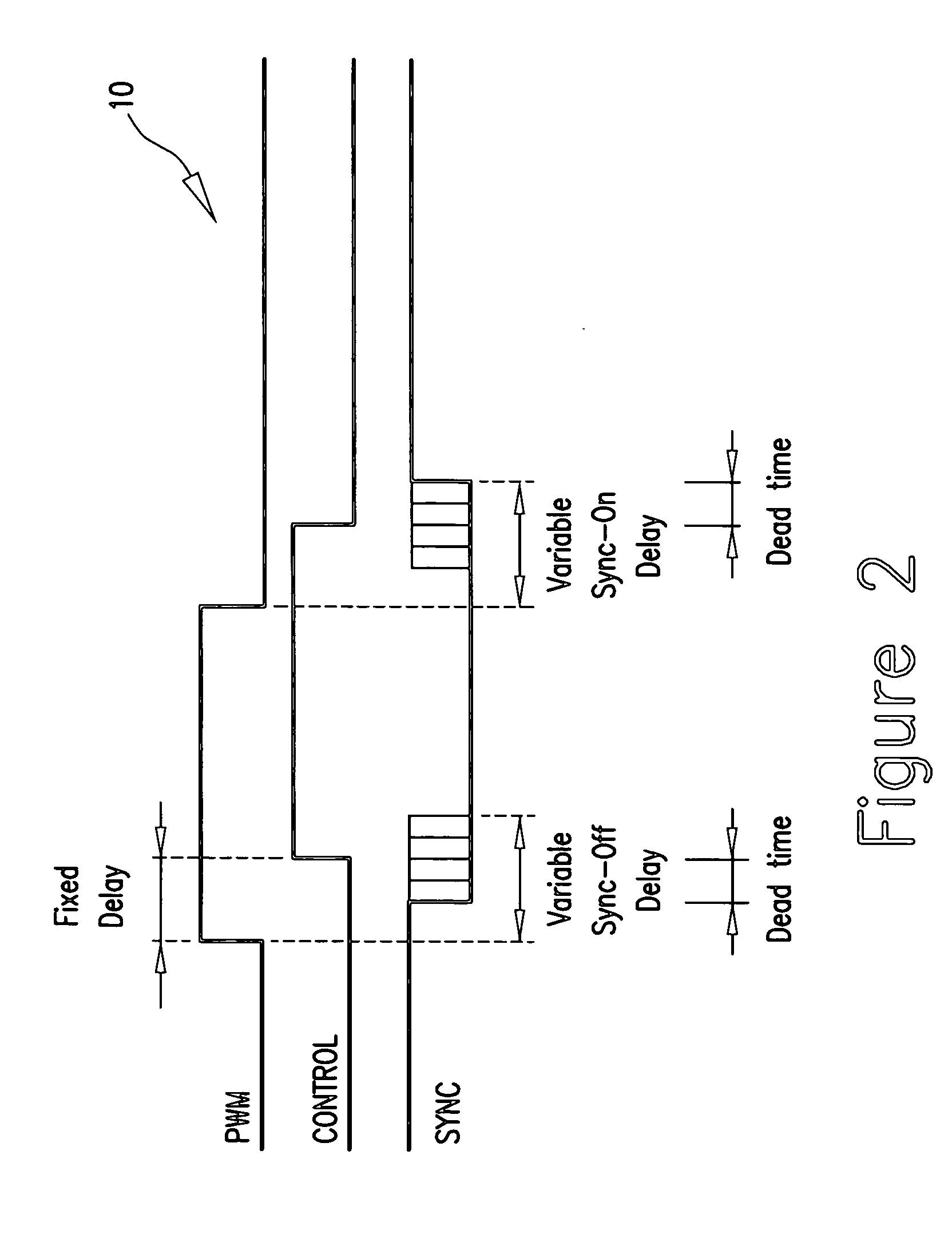Apparatus and method for minimizing power loss associated with dead time
a technology of dead time and apparatus, applied in the field of power supplies, can solve the problems of significant dead time loss, high power loss penalty for significant overlap, and additional 27 mw power loss per nanosecond of dead time, and achieve the effect of minimizing power loss, cost effective and convenient, and minimizing overall converter power loss
- Summary
- Abstract
- Description
- Claims
- Application Information
AI Technical Summary
Benefits of technology
Problems solved by technology
Method used
Image
Examples
Embodiment Construction
[0026] Turning now to the drawings, FIG. 1 shows one possible implementation of the present invention which combines digital and analog circuitry. Others are possible and most blocks and functions can be implemented with digital circuitry as well as analog.
[0027]FIG. 1 shows a DC-DC converter circuit that has been modified to incorporate the technique according to the present invention to minimize power losses during dead time. The converter includes two switches, Q1 and Q2, typically MOSFETs, connected in series between the power supply nodes VIN and ground. The converter shown is a buck converter, but the invention is applicable to any form of switching mode power supply with synchronous rectification.
[0028] As well known, the switched node N of a buck converter is coupled to the load through an output inductor L. An output capacitor C is coupled across the load. The gate of each switch Q1 and Q2 is coupled to pulse width modulated (PWM) signals from a PWM controller 12 via gate...
PUM
 Login to View More
Login to View More Abstract
Description
Claims
Application Information
 Login to View More
Login to View More - R&D
- Intellectual Property
- Life Sciences
- Materials
- Tech Scout
- Unparalleled Data Quality
- Higher Quality Content
- 60% Fewer Hallucinations
Browse by: Latest US Patents, China's latest patents, Technical Efficacy Thesaurus, Application Domain, Technology Topic, Popular Technical Reports.
© 2025 PatSnap. All rights reserved.Legal|Privacy policy|Modern Slavery Act Transparency Statement|Sitemap|About US| Contact US: help@patsnap.com



